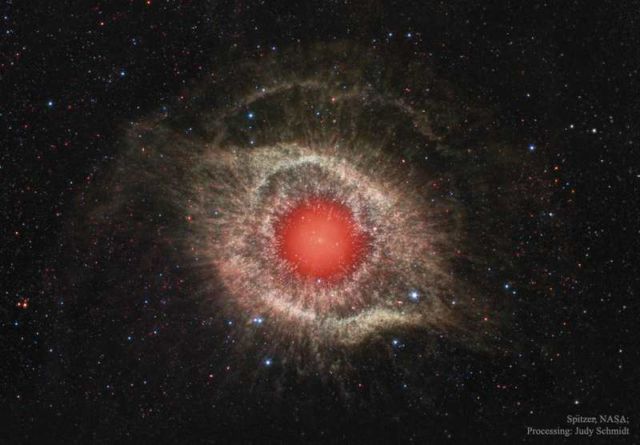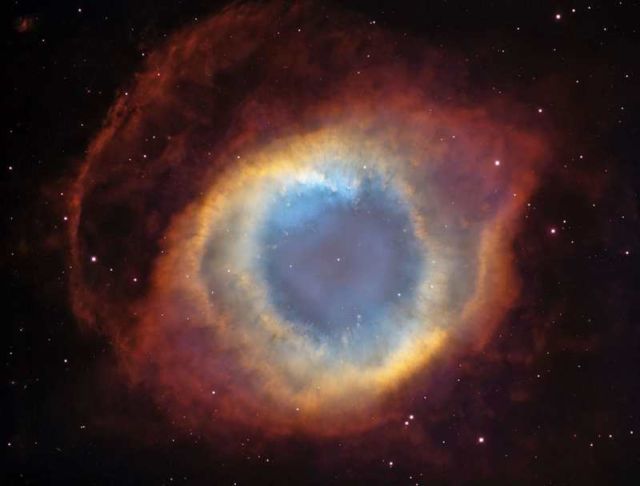An infrared image of the impressive Helix Nebula, from the robotic Spitzer Space Telescope.
The cosmic eye look so red because of dust.
The two light-year diameter shroud of dust and gas around a central white dwarf, of the Helix Nebula (NGC 7293), is 700 light-years away in the constellation of the Water Carrier Aquarius.
Credit: NASA, JPL-Caltech, Spitzer Space Telescope; Processing: Judy Schmidt
It has long been considered an excellent example of a planetary nebula, representing the final stages in the evolution of a Sun-like star. But the Spitzer data show the nebula’s central star itself is immersed in a surprisingly bright infrared glow. Models suggest the glow is produced by a dust debris disk.
Even though the nebular material was ejected from the star many thousands of years ago, the close-in dust could have been generated by collisions in a reservoir of objects analogous to our own solar system’s Kuiper Belt or cometary Oort cloud. Had the comet-like bodies formed in the distant planetary system, they would have survived even the dramatic late stages of the star’s evolution.
Credit C. R. O’Dell, (Vanderbilt) et al. ESA, NOAO, NASA
source APOD







Leave A Comment